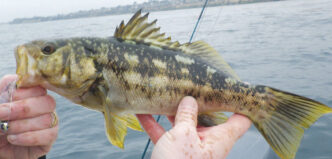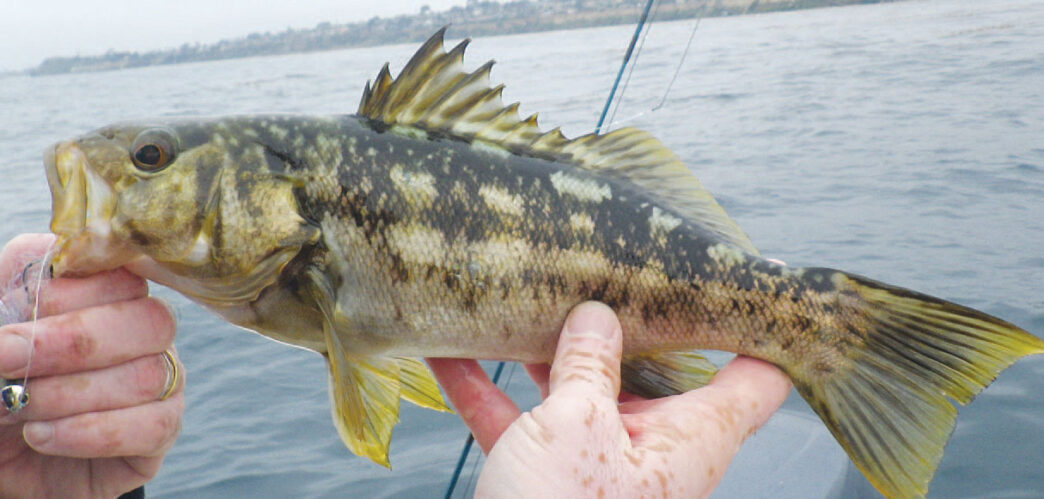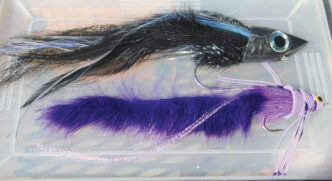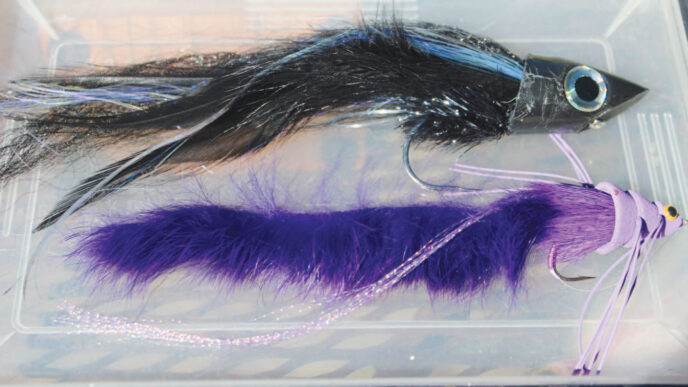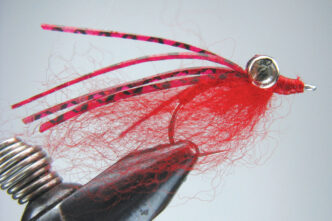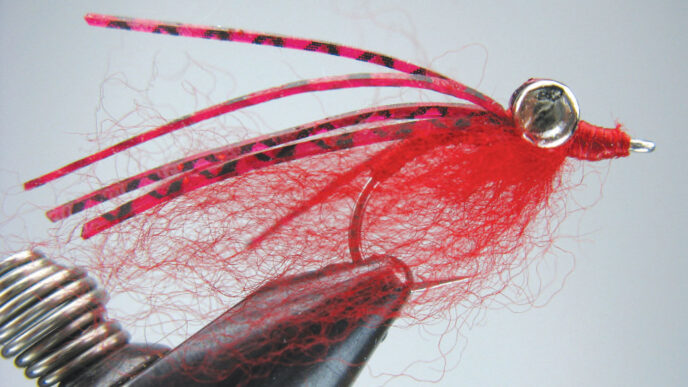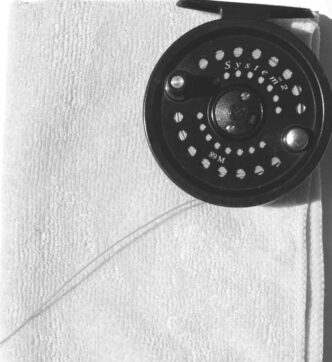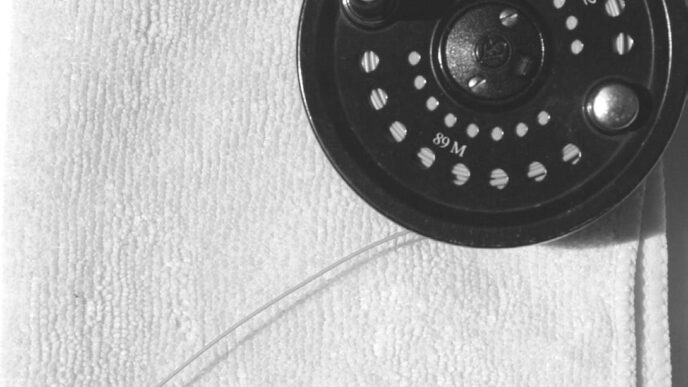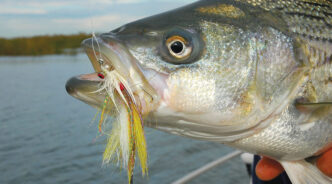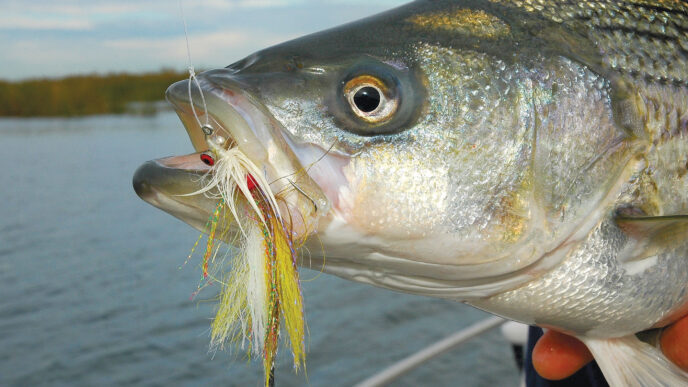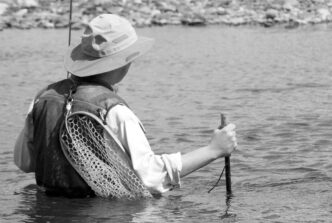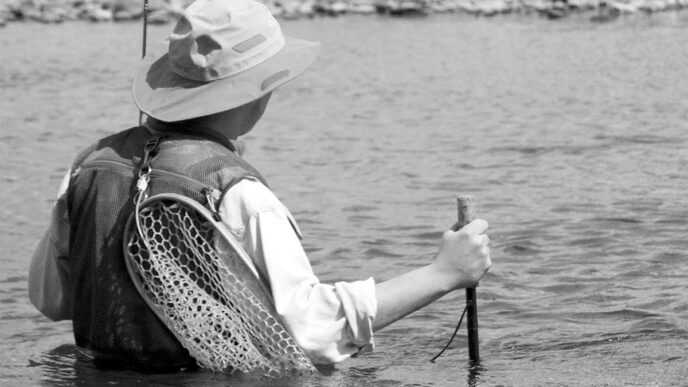I chose the title for this piece because over the years, despite their abundance and popularity in Southern California, the kelp bass (Paralabrax clathratus), commonly referred to as the calico bass, seems to always play second fiddle to other species, particularly their freshwater brethren, the largemouths. When you compare the media attention devoted to these two species, you might even think the calico doesn’t exist. In the saltwater realm, calicos do not receive the star billing associated with the likes of some of their inshore neighbors, such as the yellowtail, white seabass, barracuda, and bonito.
Maybe this has something to do with the fact that they are so abundant. In many facets of life, often the factor of scarcity is what lends value to a commodity, and we tend to prize what is not readily available. That’s one reason why anglers who can afford it spend huge sums to travel the globe in pursuit of fish not found in their home waters. In some respects it’s a manifestation of the “familiarity breeds contempt” syndrome. For example, in the days when bonito where superabundant in Redondo Beach’s King Harbor, many anglers simply began to take them for granted, showing what amounted to contempt for the fish they caught. In the heyday years, the garbage cans, the parking lot, and the break wall were littered with bonito that people threw away.
In a not too different vein, I remember that on the albacore trips I took as a youngster, when the elusive long fin played hard to get, we had to “settle” for “calicos at the island” — usually San Clemente. These were quality fish, often approaching the double-digit mark, and it was great fun catching them, even on the big conventional rigs designed for albacore. But hearing the captains (akin to fishing gods in my young eyes) complain and apologize for the absence of albies made me begin to think of calicos as a strictly second-rate species. They were like the consolation prize relegated to the times you didn’t catch any of the glory species.
Species preference remains highly subjective, but anglers’ attitudes have definitely taken a positive turn where calico bass are concerned. In many respects, they are a key species for the Southern California party-boat fleet, and with the increase in private boaters and those fishing personal watercraft such as kayaks, they are becoming more prized than ever.
In addition to their relative abundance, calicos have a number of qualities that endear them to Southern California coastal anglers. Their range is extensive along the West Coast, with the bulk of the catch extending from approximately Ensenada off Baja to California’s Channel Islands. We think of them as a coastal species, but some of the best catches, particularly in terms of size, are made at the offshore islands in both northern Baja and Southern California. This, of course, is due to the fact that some of these islands see little fishing pressure compared with inshore locales close to the beach. My good friend Scott Leon, who runs a fly-fishing charter service at Dana Landing in San Diego, was a Navy Seal and recalls swimming among pods of what he describes as “giant calicos” during underwater training exercises at San Clemente Island.
Aside from the remoteness of San Clemente, two features that make the island especially attractive to calicos are its rock outcroppings and its nutrient-rich kelp beds. Fortunately, this type of marine environment is typical of the California coast, which means that in terms of their distribution in the southern part of the state, calicos can be found in a variety of inshore locales: in bays and harbors, outside the surf line, off jetties and breakwaters, and of course, as their name implies, in the kelp beds. While shorebound fly fishers, particularly those casting from break walls and jetties, can get in on the action, the best opportunity is afforded those who are on the water in craft that can range from bluewater sport fishers to kayaks and kick boats.
As with the fly-rod striped bass in the Northeast, with the calicos, aside from their ready accessibility, a great deal of the appeal to fly fishers lies in the fact that they are amenable to a number of presentation modes that will suit a variety of anglers’ preferences. Though it’s not as productive as other methods, my personal favorite approach is to use a floating or intermediate line to toss poppers or surface-swimming patterns such as Crease Flies in the clear pockets in kelp beds, then watch the bass rocket from the depths to slam the offering. Fishing from the rocks along the Palos Verdes peninsula just south of Torrance Beach, I’ve enjoyed some terrific predawn action slithering a Crease Fly through the boulders with a slow, steady, hand-overhand retrieve. In addition to the dramatic surface grabs that you entice with a floating line setup, you almost never get fouled on a rock.
Because calicos are such a structure-oriented species, you want avoid the mistake of fishing them with fly tackle that is too light. Appropriate rod choices are 9-weight and 10-weight outfits with relatively short (6 feet or so) and stout leaders. When I have to land the fish from the rocks, I’ve found it most practical to use something like straight 30-pound test. It’s not the type of environment to be fishing regulation IGFA leader systems. Given the fact that most of the calico bass you’ll encounter weigh only a few pounds, at first glance it may seem like overkill to use 9-weight and 10-weight outfits. However, this is a classic example of where conditions dictate the choice of fly outfits, rather than the fish.
The surface bites are top on my preference list, but the most consistent action is going to be somewhere down in the water column. Depending on the time of year (another plus is that calicos are a year-round species) and locale, this can vary from just a few feet to about 60 feet or so, which is approaching the practical limit for fly fishing. During the winter months, the bass tend to congregate in deeper water, and sinking lines are a must. For ease of use and practicality, I always opt for traditional shooting-head systems, but full-line integrated lines also work fine. Using sinking lines in conjunction with weighted patterns in structure-infested water is another reason why you need to fish heftier fly tackle.
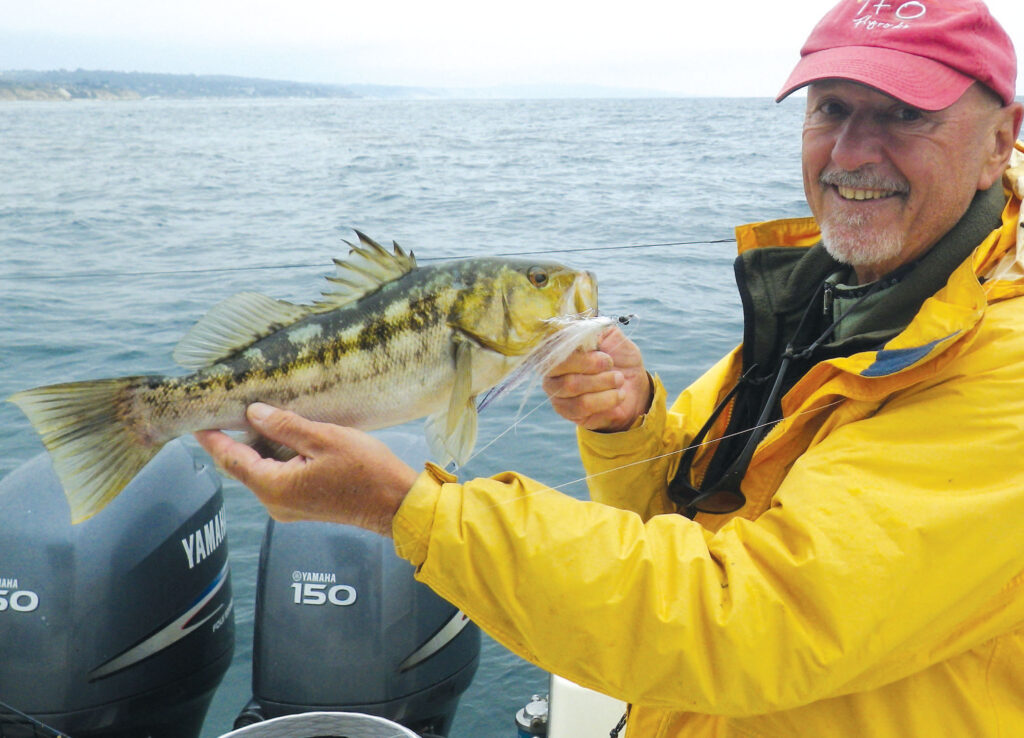
Even when fishing fairly shallow, 10 to 20 feet, for example, I opt for a fast sinking line. The reason for this is that the optimal fishing time occurs during tidal changes, when bait is being pushed around by the current, not when tides are slack. If you do not have a tide table, it’s possible to estimate the tidal phase in the kelp by observing the position of the kelp fronds in the water column. If they are nearly vertical, that indicates that there is little current. In contrast, if they are streaming almost parallel to the surface, there is a strong current. This current also slows down the line’s sink rate, so even with even a weighted fly fished with a line designated as fast-sinking, the offering isn’t going rapidly plumb the depths rapidly. This, however, can be an advantage for the fly fisher, because calico bass have a penchant for striking the offering during its descent into the depths. In party-boat circles, it’s referred to as “getting bit on the sink.”
In contrast with spin or conventional-tackle anglers, fly fishers have direct hand contact with the line, making it possible to detect the slightest interruption in the fly’s descent. You can instantly respond by simply tugging back on the line. Try to avoid sweeping the rod upward, because this often pulls the fly away from the fish. Striking with the line and playing the fish with the line is also the most effective way to pull it away from the structure. Striking
and then attempting to wind line and play it from the reel will cost you fish, especially if it’s a sizeable calico, because this will afford it an opportunity to get entangled in the kelp or to cut you off on a rock.
Calicos feed on all manner of marine organisms, ranging from baitfish such as anchovies, mackerel, Pacific tomcod, smelt, and sardines to crabs and squid. This means you can rummage through your fly selections with a high probability that you’ll find something they will strike. As when targeting Northeast stripers, though, my go-to pattern for most calico bass fishing is a Clouser. The beauty of this fly is that it’s so easily tied in a variety of configurations that it lends itself to practically any condition you’re likely to encounter. Calicos have bucket-sized mouths, but I seldom see the need for using anything larger than a 3/0 hook. Most of mine are tied on 1/0s. Depending on locale, to get the fly subsurface, you can use everything from small bead chain to heavy dumbbells for eyes.
Truthfully, in over 50 years of fishing for these bass on every kind of tackle, I am hard-pressed to cite a particular color preference my Clousers. I’ve caught most of my bass on chartreuse and white, but that is simply because I had so many of these left over from my time back East. Bait anglers refer to squid as the “candy” offering for calicos, but patterns that simulate this mollusk can take considerable tying time. However, a simple 5-inch-long brown-and-tan Clouser presents a realistic squid simulation, and it takes only a few minutes to tie. Two other squid-loving species, yellowtail and white seabass, also have fall for it. When you fish the kelp, you will lose flies. If it’s easy to tie, I don’t feel so bad.
For calicos in the kelp, some type of weed guard can be a big asset, although most fly fishers I know don’t bother with them. If you snag a section of kelp, often, the only option is to keep pulling back on the line (do not bend the rod), until the tippet breaks. For this reason, when fishing the kelp beds, as opposed to the rocks, I recommend going no heavier than a 15-pound or 16-pound-test tippet. Bite tippets are not necessary for calicos. Simply tie the fly to the tag end of the class tippet that is looped to the butt section. Depending on the size of the fly line, the butt section should consist of approximately 1-1/2 to 2-1/2 feet of a 30-pound to 50-pound test mono. If you get snagged, the objective is to have the tippet serve as the weak link, so all you break off is the fly without sacrificing the fly line.
If You Go…
If you are new to saltwater fly fishing or do not have access to any type of watercraft, the following guide services can put you in to some memorable action.
Los Angeles County: Captain Bill Matthews, FlyTime Guide Service, (310) 924-1359.
Orange County: Captain Bryan Webb, bryanwebb@ymail.com, (714) 496-3063; Captain Bill Calhoun, bill@ocflyfishing.com, (714) 3222201; Captain Vaughn Podmore, Salty Fly, saltyflyhb@yahoo.com, (714) 235-7715.
San Diego County: Captain Peter Piconi, So Cal Fly Fishing Outfitters, info@flyfishsandiego.com, (619) 823-0909; Captain Scott Leon, Paradigm Shift Charters, scott@paradigmshiftcharters.com, (619) 4009521; Capt. Jeff Stock, stockcharters@yahoo.com, (760) 518-0277.
Regardless of the time year, the California coast is often beset with chilly weather conditions, particularly in the early morning hours, so bring warm clothing. Sunscreen is also necessary, even when it’s overcast with a heavy marine layer typical for what you’ll encounter during summer.
Nick Curcione



